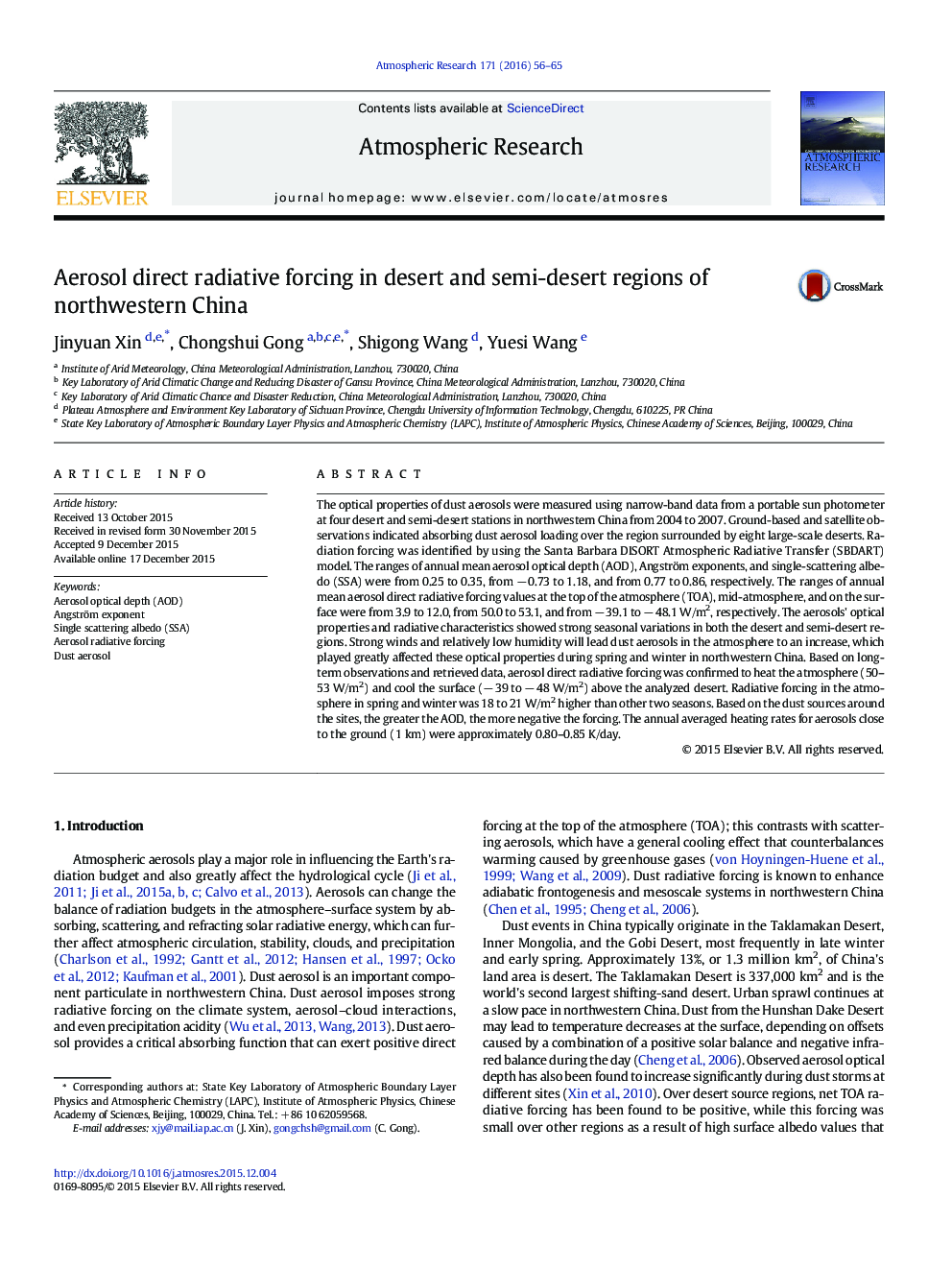| Article ID | Journal | Published Year | Pages | File Type |
|---|---|---|---|---|
| 4449602 | Atmospheric Research | 2016 | 10 Pages |
•Heavy loading of non-anthropogenic dust aerosols was in northwest China.•There were remarkable seasonal variations of aerosol optical properties.•A positive feedback has been formed between aerosol radiative forcing and the local wind and specific humidity, implying that dust aerosol absorption is substantial in northwestern China.•Dust aerosols warmed the atmosphere–surface system in the northwest China.
The optical properties of dust aerosols were measured using narrow-band data from a portable sun photometer at four desert and semi-desert stations in northwestern China from 2004 to 2007. Ground-based and satellite observations indicated absorbing dust aerosol loading over the region surrounded by eight large-scale deserts. Radiation forcing was identified by using the Santa Barbara DISORT Atmospheric Radiative Transfer (SBDART) model. The ranges of annual mean aerosol optical depth (AOD), Angström exponents, and single-scattering albedo (SSA) were from 0.25 to 0.35, from − 0.73 to 1.18, and from 0.77 to 0.86, respectively. The ranges of annual mean aerosol direct radiative forcing values at the top of the atmosphere (TOA), mid-atmosphere, and on the surface were from 3.9 to 12.0, from 50.0 to 53.1, and from − 39.1 to − 48.1 W/m2, respectively. The aerosols' optical properties and radiative characteristics showed strong seasonal variations in both the desert and semi-desert regions. Strong winds and relatively low humidity will lead dust aerosols in the atmosphere to an increase, which played greatly affected these optical properties during spring and winter in northwestern China. Based on long-term observations and retrieved data, aerosol direct radiative forcing was confirmed to heat the atmosphere (50–53 W/m2) and cool the surface (− 39 to − 48 W/m2) above the analyzed desert. Radiative forcing in the atmosphere in spring and winter was 18 to 21 W/m2 higher than other two seasons. Based on the dust sources around the sites, the greater the AOD, the more negative the forcing. The annual averaged heating rates for aerosols close to the ground (1 km) were approximately 0.80–0.85 K/day.
